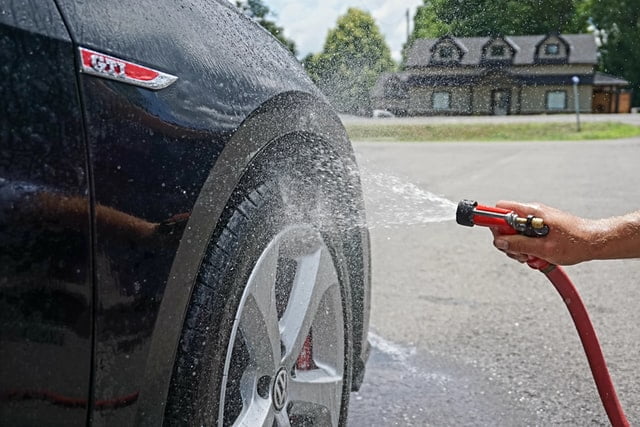
Acrylic nails can be a great way to enhance your natural nails, but removing them can often be challenging. Many individuals resort to harsh techniques that can damage their natural nails. Whether you want to change your nail style, address any damage, or return to your natural nails, the process can be accomplished with patience and the right tools.
While it’s essential to exercise caution and follow the proper steps to avoid damage to your natural nails, learning how to remove acrylic nails at home safely is a valuable skill that can save you time and money in the long run. In this article, we will walk you through a step-by-step process to remove acrylic nails without damage, giving you the knowledge and skills to undertake this task easily.
What are Acrylic Nails?
Acrylic nails are a popular choice for those looking to enhance the appearance of their natural nails. These artificial extensions are created by blending liquid monomer with powder polymer, resulting in a robust and enduring nail extension. The beauty of acrylic nails lies in their versatility, as they can be tailored to your preferred length and shape.
One of the key advantages of acrylic nails is their remarkable strength and durability, which helps protect your natural nails from potential breakage. They offer a polished, long-lasting look that stays fresh for several weeks. Moreover, acrylic nails are a canvas for creativity, easily adaptable for various colors and intricate nail designs and art.
Despite their many advantages, it’s important to note that some concerns are associated with acrylic nails. If they are not applied or removed correctly, they can potentially harm your natural nails. Additionally, the chemicals used in the application process can trigger allergic reactions in some individuals.
Why Remove Acrylic Nails at Home?
There are several reasons why individuals may want to remove their acrylic nails at home. One of the reasons is to give their natural nails a break from the constant use of artificial extensions. Another reason could be the desire to change the color or design around your nails. Removing acrylic nails at home also saves time and money that would otherwise be spent at a nail salon.
Awareness of the potential risks of removing acrylic nails at home is essential. Improper removal techniques can cause damage to the natural nails, such as peeling, weakening, or thinning. Following safe and effective methods to minimize potential risks is crucial. With proper preparation and care, you can remove your acrylic nails without causing damage to your natural nails.
Tools on How to Remove Acrylic Nails
Here are the essential tools and products you will need to remove acrylic nails at home:
- Acetone-based Nail Polish Remover: Acetone-based nail polish remover is crucial for breaking down the acrylic material and dissolving the adhesive holding the nails. Look for a nail polish remover with a high acetone content for more efficient removal.
- Nail File: A nail file is essential for gently roughening the surface of the acrylic nails. This step helps the acetone penetrate and dissolve the acrylic more effectively.
- Wooden Cuticle Stick or Cuticle Pusher: A wooden cuticle stick or cuticle pusher is used to lift and loosen the acrylic nails. Be careful not to damage your natural nails.
- Cuticle Oil: Cuticle oil helps protect your natural nails and cuticles from the drying effects of acetone. It also promotes nail health and prevents excessive dryness.
- Bowl or Container for Soaking: You’ll need a large container to soak your fingertips in acetone comfortably. A glass or plastic bowl works well for this purpose. Ensure it’s deep enough to cover your nails but not too wide to conserve the acetone needed.
- Nail Buffer: A nail buffer can be handy for smoothing your natural nails after removing the acrylic nails. It helps to even out the texture and shape of your nails.
Step-by-Step Guide to Removing Acrylic Nails Using Acetone

Acetone is renowned for effectively removing acrylic nails, making it a favored choice among nail enthusiasts and professionals. Its powerful solvent properties enable the gentle and thorough removal of acrylic extensions, ensuring your natural nails remain healthy and undamaged. To safely remove acrylic nails at home without causing any damage to your natural nails, follow these steps:
- Prepare your nails: Start trimming your nails with a nail clipper to remove any excess length. This will make the removal process more manageable and prevent any accidental damage to the surrounding skin.
- File the top layer: Gently file the top layer of the acrylic nails using a nail file. This will help to break the seal and allow the acetone to penetrate more effectively.
- Soak your nails in acetone: Fill a bowl with acetone-based nail polish remover (ideally 100%) and soak your fingertips for approximately 15-20 minutes. This will loosen the adhesive bond of the acrylic nails, making them easier to remove.
- Check the progress: After soaking your acrylic nails, check if they have started to lift or soften. If they do, gently peel them off using a wooden cuticle stick or a nail buffer. Be very careful not to force them, as this can damage your natural nails.
- Repeat if necessary: If the acrylic nails do not come off quickly after the first soak, you may need to repeat the soaking process for another 10-15 minutes. Patience is key to ensuring you don’t damage your nails.
- Gently push and lift: Once the acrylic nails have sufficiently softened, use the wooden cuticle stick to move and lift them off your natural nails gently. Always work gently and upward to avoid damaging the nail plate underneath.
- Buff your nails: After removing the acrylic nails, use a gentle nail buffer to smooth out any remaining residue and restore the natural shine of your nails. Be cautious not to over-buff, as this can weaken your natural nails.
- Moisturize and nourish: Apply a nourishing cuticle oil and hand cream to moisturize and replenish your skin and nails. This will help to prevent any dryness or damage that may have occurred during the removal process.
- Give your nails time to recover: Your natural nails may weaken after acrylic removal. To keep your nails healthy, allow them time to recover and grow. Avoid applying acrylic or gel polish immediately, as this can hinder the healing process.
- Consider professional help: If you are unsure about removing acrylic nails at home or have concerns about damaging your natural nails, it’s always a good idea to seek the assistance of a professional nail technician or nail artist.
How to Take off Acrylic Nails at Home Without Acetone?

While acetone is the most effective way to remove acrylic nails, there are alternative methods if you don’t have acetone. Here are a few options:
Soak-Off Method
The soak-off method is an effective way to remove acrylic nails without acetone. It involves using warm water and oil to soften the acrylic, making it easier to gently remove the fake nails without damaging your natural nails.
To execute this method, follow these steps:
- Begin by preparing a bowl of warm water. The water should be comfortably warm and not too hot to avoid discomfort or burns.
- Add a few drops of oil, such as olive or baby oil, to the warm water. The oil helps to soften the acrylic nails further.
- Submerge your acrylic nails in the warm oil and water mixture. Allow them to soak for approximately 20-30 minutes. This soaking time may take longer for thicker acrylic layers.
- After soaking, you can use a cuticle pusher or a wooden stick to gently push the softened acrylic away from your natural nail plate. Be patient and avoid excessive force to prevent damage to your real nails.
- Continue gently pushing the acrylic until it starts lifting and separating from your natural nails.
- Once the acrylic nails have loosened sufficiently, you can carefully peel or lift them off your natural nails.
- Ensure you do this gently to minimize any potential damage.
- After removal, you can moisturize and care for your natural nails, allowing them to recover and grow.
Using Dental Floss
Another effective method to remove acrylic nails without acetone is using dental floss. This technique is beneficial when removing acrylic nails with nail designs or gel nails without damaging your natural nails.
Follow these steps to remove acrylic nails using dental floss:
- Gently slide a dental floss strand between the acrylic and your natural nail. Be cautious not to force the floss or cause discomfort.
- Once you have the dental floss underneath the acrylic nail, carefully work it back and forth in a sawing motion. This action will gradually separate the acrylic from your natural nail.
- Continue this process until the acrylic nail is fully detached. Take your time to avoid damaging your natural nails in the process.
- If you encounter resistance, you can reapply the dental floss and work on those areas until the acrylic nails come off.
- After removal, ensure you give your nails time to recover and grow naturally. You can also apply nail polish to give your nails a polished appearance.
Using Hot Water and Oil
Using hot water and oil is an alternative method to remove acrylic nails without acetone. It effectively softens the acrylic, making it easier to remove without damaging your natural nails.
To execute this method, follow these steps:
- Heat a bowl of water to a comfortably hot temperature. Ensure it’s not scalding hot to prevent burns.
- Add a few drops of oil, such as olive or baby oil, to the hot water. The oil helps in softening the acrylic nails.
- Place your hands in the hot water and oil mixture, allowing the acrylic nails to soak for approximately 15-20 minutes. Thicker acrylic layers may require more soaking time.
- After soaking, use a wooden stick or cuticle pusher to push the softened acrylic away from your natural nails gently. Be patient and avoid excessive force.
- Continue gently pushing the acrylic until it separates from your natural nails.
- Once the acrylic nails have loosened enough, carefully peel or lift them off your natural nails. Take care to do this gently to minimize potential damage.
- Following removal, you can moisturize and care for your natural nails, allowing them to recover and grow naturally.
Aftercare Tips for Healthy Nails
- Moisturizing and Nourishing Your Nails: After removing your acrylic nails, it is vital to moisturize and nourish your natural nails. Apply cuticle oil or moisturizing nail treatment to keep your nails hydrated and prevent them from becoming dry and brittle.
- Giving Your Nails a Break: Giving your nails a break from artificial extensions is essential to promote their health and natural growth. Avoid applying nail polish or extensions immediately after removing your acrylic nails. Let your natural nails breathe and recover.
- Choosing Nail Care Products: When using nail care products, such as nail polish and remover, opt for those that are gentle and formulated to promote nail health. Look for acetone-free products enriched with nutrients that nourish and strengthen the nails.
By following the appropriate techniques and giving your nails the care they need, you can safely and effectively remove your acrylic nails at home without damaging your natural nails. Whether you choose to use acetone or prefer acetone-free methods, it is important to remember to be gentle and cautious throughout the removal process. Remember always to prioritize the health and well-being of your natural nails.
Frequently Asked Questions
Q: What are safe methods for removing acrylic nails at home without damaging natural nails?
A: You can follow a few safe methods to remove acrylic nails at home without damaging your natural nails. One of the most popular methods is using acetone-free nail polish remover. You can also use warm water and dish soap to soak your nails. Alternatively, you can try the foil method, where you soak cotton balls in acetone and wrap them around your nails, then cover them with foil for about 15 minutes to soften the acrylic.
Q: How can I remove fake nails without going to a nail tech?
A: If you don’t want to go to a nail tech, you can remove fake nails at home by following simple steps. Start by cutting down the length of your fake nails as much as possible. Then, file the top layer of the artificial nails to remove the shine. After that, soak your nails in acetone for around 20 minutes. Finally, use a cuticle pusher or an orange stick to lift and scrape off the softened acrylic gently.
Q: What should I do to take care of my natural nails after acrylic removal?
A: After removing acrylic nails, giving your nails time to recover and restore their health is essential. Apply nourishing cuticle oil daily to moisturize your natural nails and cuticles. Avoid aggressive buffing or filing, and opt for a gentle nail file to shape your nails. Allow your nails to breathe by keeping them polish-free for a few days. This will help your nails grow stronger and healthier.
Q: Can I remove gel polish at home without damaging my nails?
A: You can remove gel polish at home without damaging your nails. Start by filling the top layer of the gel polish to break the seal. Next, soak a cotton ball in acetone and place it on your nail. Wrap your nail in foil to hold the cotton ball in place. Leave it on for about 15 minutes to let the acetone penetrate and soften the gel polish. Finally, gently scrape off the gel polish with a cuticle pusher or an orange stick.
Q: What is the safest way to remove acrylic nails at home?
A: The safest way to remove acrylic nails at home is by following a step-by-step process. Start by cutting down the length of your acrylic nails using nail clippers. File the top layer of the acrylic nails to remove the shine. Then, soak your nails in acetone or an acetone-free nail polish remover for about 20 minutes. After soaking, use a cuticle pusher or an orange stick to lift and scrape off the softened acrylic gently. Finish by moisturizing your nails with cuticle oil.
Q: How can I protect my natural nails while removing acrylics at home?
A: To protect your natural nails while removing acrylics at home, it’s important not to rush the process. Avoid forcefully prying or pulling off the acrylic nails, as this can cause damage to your natural nails. Instead, opt for gentle methods such as soaking your nails in acetone or using an acetone-free nail polish remover. Remember to be patient and take your time to remove the acrylics properly.
Q: Is it possible to remove acrylic nails without filing?
A: Removing acrylic nails without filing is possible, but it may take longer. One method is to soak your nails in acetone or an acetone-free nail polish remover for a longer duration, usually around 30 minutes to an hour. This will gradually soften the acrylic, making it easier to scrape off. Remember to be gentle when using a cuticle pusher or an orange stick to avoid damaging your natural nails.
Q: How can I remove the foil when taking off acrylic nails?
A: When removing acrylic nails using the foil method, you can remove the foil by simply unwrapping it from your fingers. Start by peeling off the foil from one finger, then move on to the next finger until all the foils are removed. If there is any remaining acrylic residue, gently scrape it off using a cuticle pusher or an orange stick.
Conclusion
Removing acrylic nails at home without damaging your natural nails is a meticulous process that requires patience and care. It’s essential to follow the right steps to ensure the health of your nail bed and the integrity of your natural nails. The safest way to remove acrylic nails is by using acetone, preferably acetone nail polish remover or an acetone-based nail soak. During the acrylic nail removal process, do not force or pry the acrylic nails off, as this can lead to damaged nails. Instead, let the softened acrylic naturally lift off your nails.
By following this guide on removing acrylic nails at home with care and patience, you can maintain the health of your nails, leaving your nails looking beautiful and undamaged. If you have concerns about the process, consider consulting a professional nail artist or owner who can provide further guidance on removing acrylics without damaging your nails and help prevent your nails from breaking or suffering any undue harm in the process.
For more insightful articles like this, subscribe to our community at the Family Hint today!




